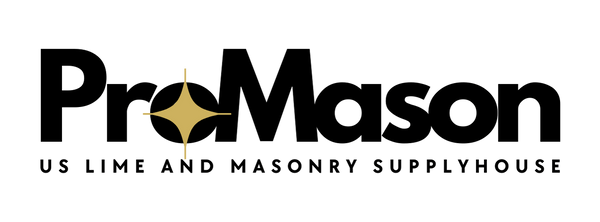While the warmer months might seem ideal for masonry restoration, sometimes projects extend into the colder seasons. Don't let dipping temperatures derail your progress! With a proactive approach and the right techniques, you can ensure quality results and safeguard your work against the challenges of winter.
Frost Protection: A Multi-Layered Approach
Frost is a significant threat to fresh masonry. When water within the mortar freezes, it expands, leading to cracks, spalling, and compromised structural integrity. Here's how to mitigate this risk:
- Insulation: Think of it as tucking your masonry in for the night. Utilize insulating materials like hessian blankets, polyethylene sheeting, or even straw bales to cover your work. These act as barriers, trapping heat and preventing the mortar from reaching freezing temperatures. The thicker the insulation, the better the protection.
- Wind Protection: Wind chill can drastically amplify the effects of cold temperatures. Construct temporary windbreaks using plywood, tarpaulins, or scaffolding sheeting to shield your masonry from harsh winds, particularly during the initial curing phase.
- Heated Enclosures: For larger projects, especially those involving structural elements or intricate detailing, consider building a temporary heated enclosure around the work area. This provides a controlled environment and ensures consistent temperatures for optimal curing. Portable heaters, with proper ventilation, can be used within these enclosures to maintain above-freezing temperatures.
Taking the Chill Off: Heating the Work Area
In situations where insulation alone isn't sufficient, supplemental heat can be a valuable tool.
- Salamanders and Direct-Fired Heaters: These provide a robust source of localized heat, particularly useful for smaller areas or specific tasks like drying out saturated walls. However, exercise caution! Ensure adequate ventilation to prevent carbon monoxide buildup and maintain a safe distance from flammable materials.
- Indirect-Fired Heaters: These are a safer alternative to direct-fired heaters, as they utilize a heat exchanger to warm the air without exposing the flame. They are often more fuel-efficient and produce cleaner, drier heat, making them suitable for enclosed spaces.
- Infrared Heaters: These offer a more even heat distribution than traditional heaters and can be particularly effective for warming larger areas. Infrared heaters work by radiating heat, which is absorbed by objects and surfaces, providing a more consistent temperature throughout the work zone.
Curing Lime Mortar: The Slow and Steady Approach
Lime mortar, especially traditional non-hydraulic varieties, requires time and the right conditions to cure properly. Cold weather can significantly slow down this process, demanding extra attention and patience.
- Moisture Retention: Lime mortar needs moisture to cure effectively. Regularly mist the masonry with water, especially in dry conditions or when using heaters that can dry out the air. Consider using damp hessian or burlap coverings to help retain moisture and promote a more even curing process.
- Extended Curing Time: Accept that cold temperatures will inevitably extend the curing time. Don't rush the process. Allow the mortar to cure fully before exposing it to harsh weather or applying any further finishes. Consult the mortar manufacturer's recommendations and adjust curing times based on the prevailing temperature and humidity.
Hydraulic Lime: A Cold Weather Champion
Hydraulic lime mortars offer distinct advantages when working in colder temperatures:
- Accelerated Setting: Hydraulic lime sets faster than traditional lime mortar due to its chemical composition. This reduces the window of vulnerability to frost damage, especially during the initial setting phase.
- Enhanced Durability: Hydraulic lime mortar exhibits greater resistance to freeze-thaw cycles, making it an excellent choice for regions with harsh winters. Its inherent strength and durability contribute to long-lasting and resilient masonry.
ProMason Supply offers a comprehensive range of high-quality hydraulic lime mortars specifically formulated for various applications and weather conditions. Visit our website or contact our experts to discuss your project requirements and find the ideal products for your cold weather restoration.
By understanding the challenges of cold weather masonry and implementing these strategies, you can confidently tackle your restoration projects year-round. Remember, preparation, patience, and the right materials are the keys to achieving exceptional results, even when the mercury dips.

